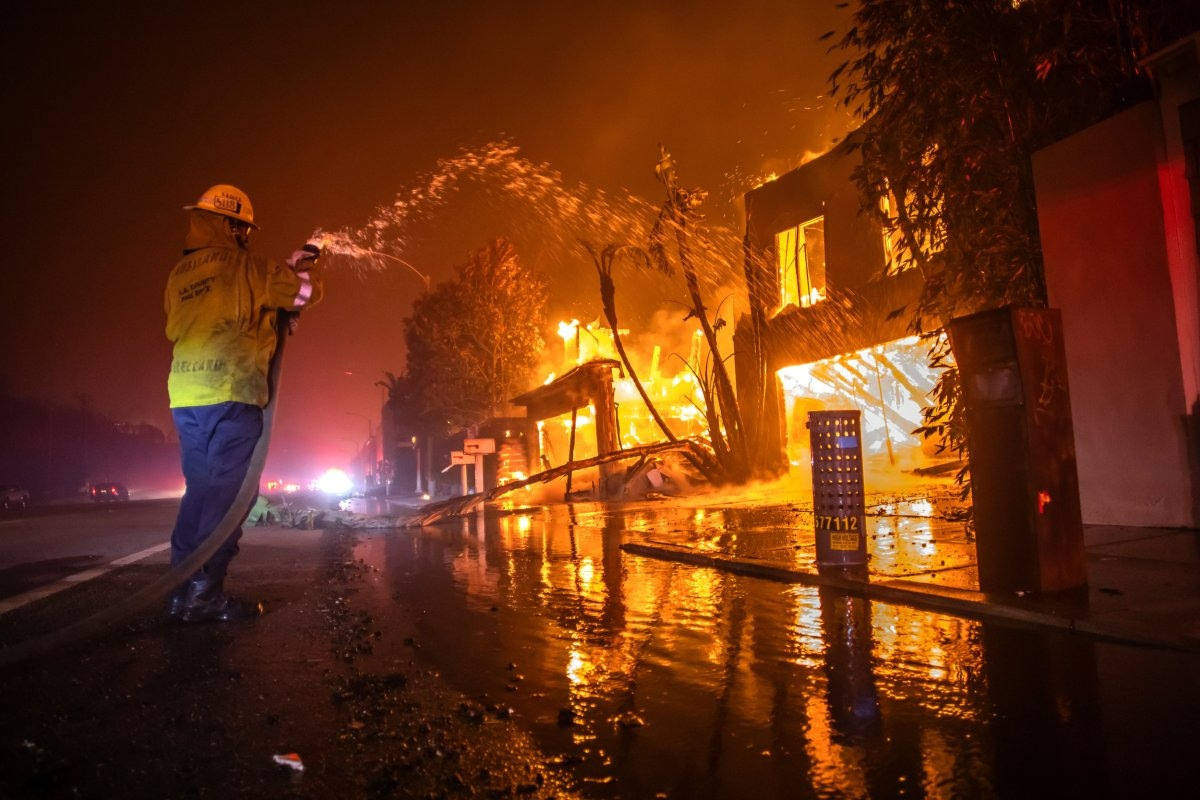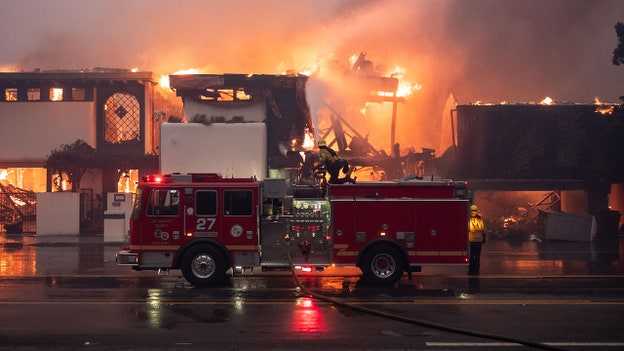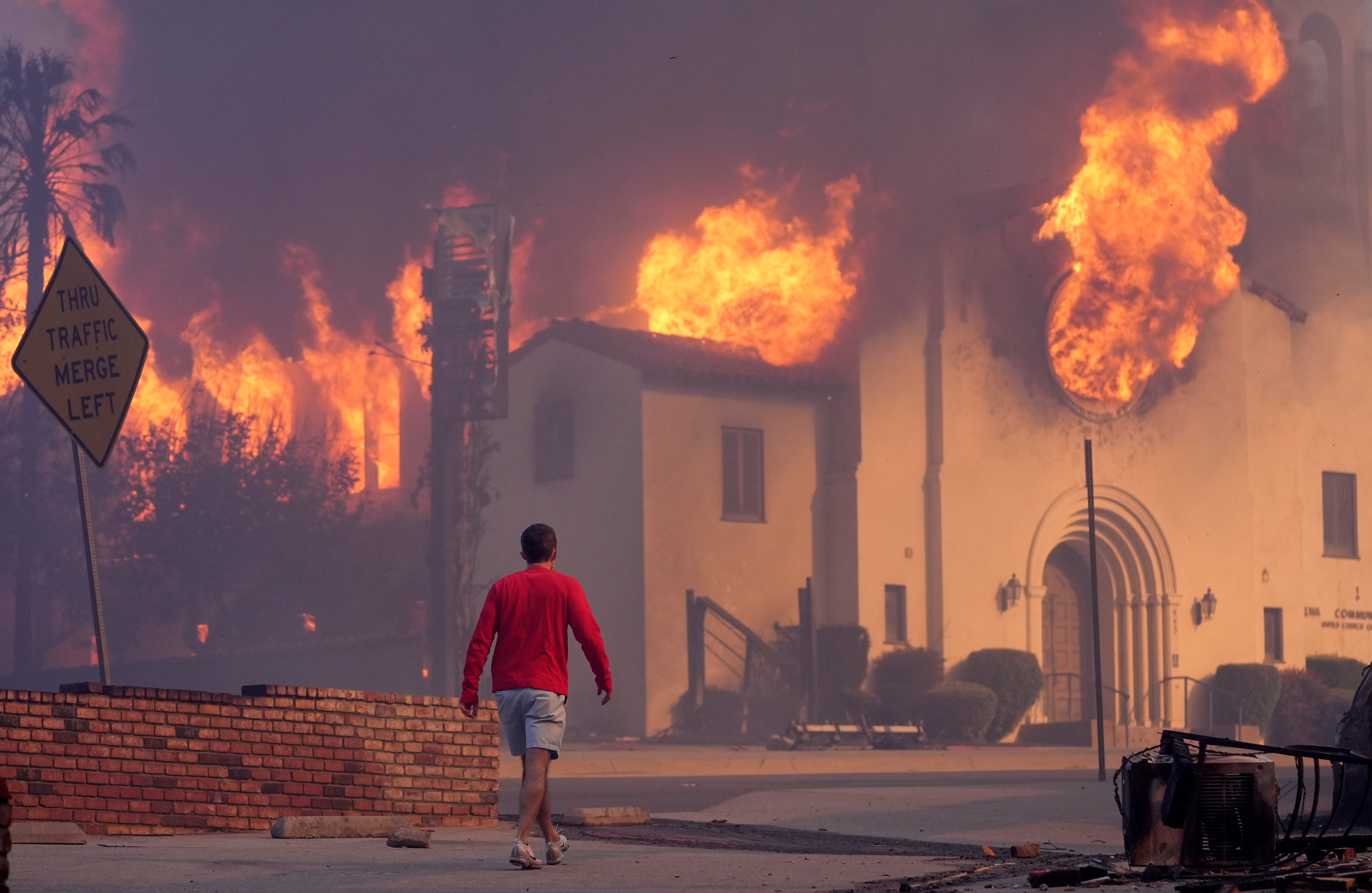Breaking News: massive Southern California Wildfires Leave Trail of Destruction

A Historic Disaster Unfolds
From January 7 to January 31, 2025, Southern California faced one of the most destructive wildfire crises in its recent history. Two massive blazes — the Palisades Fire in Pacific Palisades and the Eaton Fire across the Altadena–Pasadena corridor — scorched nearly 57,000 acres combined, devastating neighborhoods and overwhelming emergency services.
The Palisades Fire tore through roughly 23,700 acres, while the Eaton Fire burned 14,000+ acres, driven by relentless Santa Ana winds and bone-dry conditions. Officials now rank these events among the most damaging wildfires the state has seen in decades.
Human Loss and Structural Damage

The human toll was staggering. According to reports from CAL FIRE, Reuters, and People Magazine, at least 30 people lost their lives and over 200,000 residents were forced to evacuate.
Property losses were catastrophic:
-
Palisades Fire: 6,837 structures destroyed, 973 damaged, and 12 confirmed fatalities (including one firefighter).
-
Eaton Fire: More than 9,400 buildings lost or damaged, 17 confirmed deaths.
In total, over 18,000 structures were either damaged or reduced to ash.
Why the Fires Spread So Fast
Investigators are still determining the exact ignition sources, but multiple factors worsened the disaster. Reports from ABC7 Los Angeles, The Guardian, and NY Post point to:
-
Hurricane-force Santa Ana winds
-
Critically low humidity
-
Years of drought
One major obstacle: the Santa Ynez Reservoir — which supplies 117 million gallons of water for hillside firefighting — was nearly dry. The shortage crippled hydrant pressure in key areas, delaying early containment efforts.
Emergency Response
The first 911 call hit the Los Angeles Fire Department (LAFD) on January 7 at 10:29 AM. But early firefighting efforts were strained by recent budget cuts to LAFD, which reduced staffing and equipment.
As flames intensified, help poured in from across the West. Fire crews from Oregon, Washington, Arizona, Utah, Montana, New Mexico, and Texas joined the fight. Aircraft — from helicopters to heavy air tankers — provided round-the-clock aerial support.
By January 31, CAL FIRE announced both fires were 100% contained.
Economic Fallout

The financial losses are staggering:
-
Insured damages: $20+ billion
-
Total economic impact: projected at $50 billion (property, business losses, and disruptions)
-
LAEDC projections: property damage alone between $28–53.8 billion
Long-term economic ripples could add another $5–9.7 billion through 2029.
Recovery and Relief
In the wake of devastation, California launched the “LA Rises” recovery plan with $2.5 billion in initial state and private funding.
-
The Los Angeles Dodgers Foundation pledged $100 million.
-
Fundraisers like FireAid and Los Angeles Rising mobilized celebrities and musicians to generate support for victims.
Environmental & Health Impacts
The wildfires triggered a public health crisis. The EPA and California Air Resources Board recorded PM2.5 pollution levels at 483 µg/m³ — more than 10 times the safe threshold.
Health officials warned of:
-
Respiratory flare-ups for asthma and COPD patients
-
Dangerous exposure to toxic debris
Cleanup crews, guided by the EPA and FEMA, were tasked with safely removing hazardous materials like electric vehicle batteries, gas cylinders, and agricultural chemicals from burned zones.
Lessons for the Future

Experts say these fires exposed major vulnerabilities:
-
$17.6 million in LAFD budget cuts hurt emergency readiness.
-
Failing water infrastructure slowed early firefighting.
But the disaster also produced breakthroughs. Emergency Operations Centers (EOC) were established within 24 hours, cutting response times by 40%, and fast-track rebuilding permits reduced recovery delays from 120 days to just 45.
These strategies are now being considered as statewide models for future disasters.
Conclusion
The Palisades and Eaton Fires will be remembered as one of Southern California’s darkest wildfire seasons. More than 57,000 acres burned, over 18,000 buildings lost, and billions of dollars in damage left an enduring mark.
Recovery will take years, but lessons learned — from funding emergency services to strengthening water systems — could help prevent future tragedies of this scale.